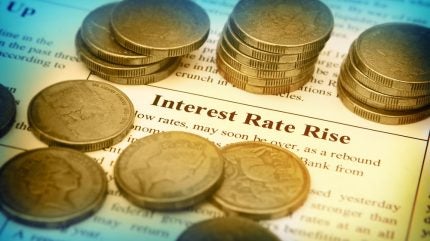
In central banks and finance ministries around the world, policymakers are walking a tightrope. The threat of an impending global slowdown would usually call for a massive countercyclical response – the kind of money printing seen in 2009 and, to a greater extent, 2020. Yet with inflation remaining stubbornly at multi-decade highs, fiscal and monetary injections threaten to make the crisis worse.
This isn’t the first time such a dilemma has reared its head: in the 1970s and early 1980s, policymakers similarly faced the twin threat of inflation and stagnation. Rather than offering a template for action today, however, that episode serves more as a cautionary tale.

Discover B2B Marketing That Performs
Combine business intelligence and editorial excellence to reach engaged professionals across 36 leading media platforms.
Inflation was allowed to run rampant throughout the 1970s, and was eventually brought to heel only by an economically disastrous hike in interest rates – one which spawned a global recession and a decade of debt crises across the Global South.
A tightening balance
Avoiding the mistakes of both the 1970s and 1982 will require central bankers and fiscal policymakers to tread a fine line. Too little tightening and they risk entrenching inflation for years to come, but too might tightening and they risk a global crisis far more severe than the current inflationary episode.
A new report by the World Bank has sounded the alarm on a further complication. The world economy is far more integrated than it was during the last global inflationary crisis. As a result, any synchronous tightening of monetary or fiscal policies could have serious compounding effects, raising the risk of overcorrection.
When a single country raises interest rates or cuts domestic spending, for instance, the effect will typically be dampened through exchange rate fluctuations. A sharp deterioration in growth leads to currency depreciation, increasing net exports and thereby boosting economic activity. When all countries are tightening their belts simultaneously, such countervailing effects are negated.

US Tariffs are shifting - will you react or anticipate?
Don’t let policy changes catch you off guard. Stay proactive with real-time data and expert analysis.
By GlobalDataThe World Bank’s analysis suggests that a global interest rate hike of just two percentage points above current market expectations would be enough to tip the world economy into a recession on the scale of 1982.
Although the bank does not currently forecast a global recession, it warns that the world economy is in a precarious position. Over the past five decades, global recessions have typically been preceded by certain telltale signs: slowing GDP growth, a fall in manufacturing orders, declining consumer and producer confidence and a drop in equity price growth. All of these are currently on a path more severe than for past recessions.
Another red flag is the fact that the downturn is being driven by advanced economies, whose negative prospects are likely to feed into those of emerging market and developing economies (EMDEs).
A pessimistic scenario
According to the World Bank’s current forecasts, based on market expectations the GDP-weighted average global interest rate is set to peak at 3.8% in 2023. If inflation persists longer than anticipated, however, rates may be raised higher.
A one percentage point increase above the World Bank’s baseline forecast would result in a severe global downturn, including recessions in the US and the eurozone, while a two percentage point increase would push the world economy as a whole into recession.
Under the more pessimistic scenario, global real short-term interest rates would rise by 560 basis points between 2021 and 2023 – even larger than the increase that took place between 1980 and 1982. Focused on containing inflation, central banks and governments would be unable to offer significant countercyclical support as they did during the recessions of 2009 and 2020.
As in the 1980s, EMDEs would face the most severe consequences from a tightening of global financial conditions and a collapse in commodity prices. Those with large current account deficits, that rely on foreign currency inflows, or that have large volumes of short-term or foreign-denominated debt would be most at risk, the World Bank warns.
The bank is advising policymakers to shore up their foreign currency reserves, reduce their debt and ensure their banking system is able to withstand major shocks. Dealing with the root cause of inflation, supply shocks, is likely to require more sustained engagement in efforts such as building active labour market policies, reducing energy usage and transitioning to renewable power.





